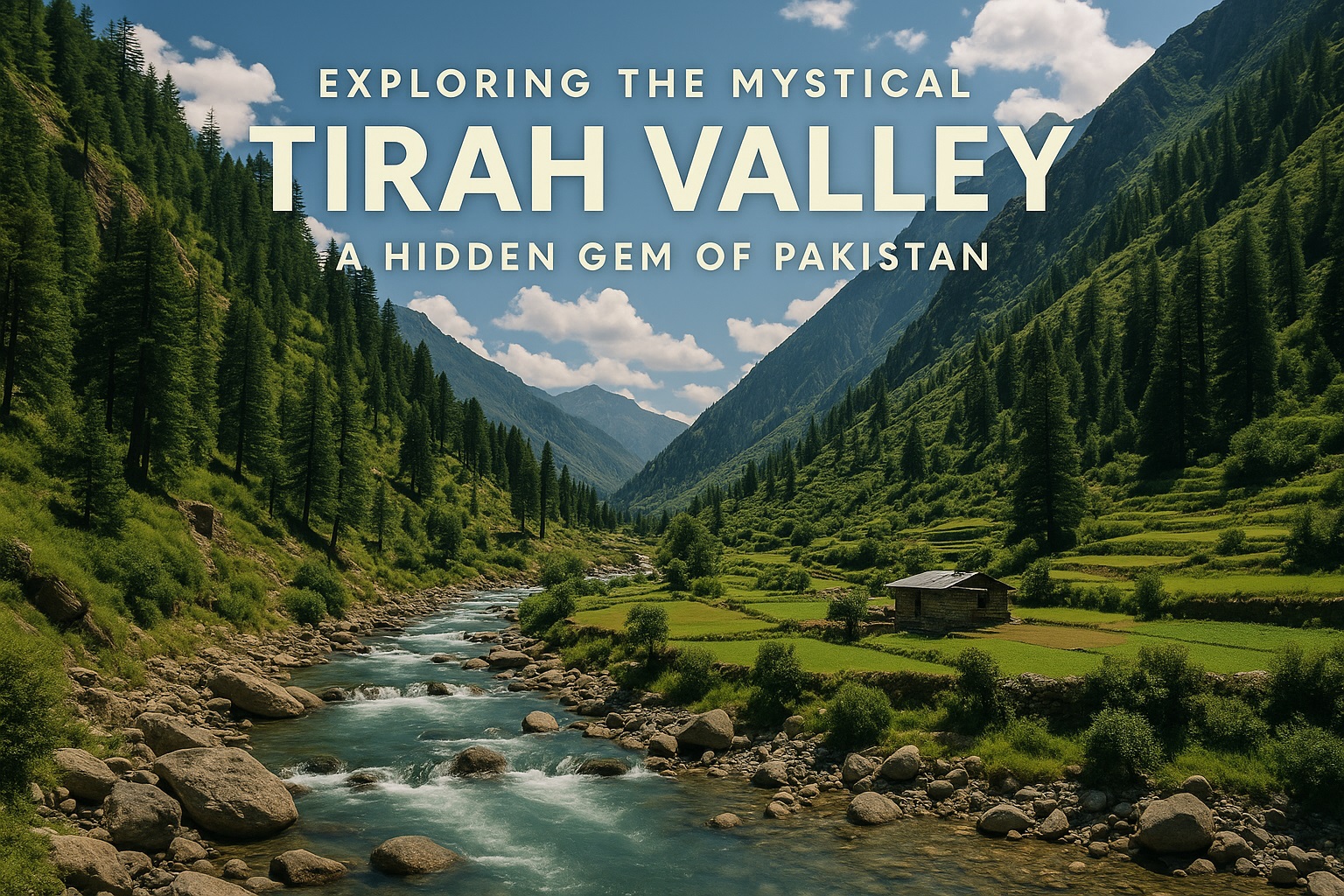Exploring the Mystical Tirah Valley, located in Khyber Pakhtunkhwa, Pakistan, is a stunning destination known for its natural beauty, cultural heritage, and historical significance. Discover landscapes, traditions, and adventure opportunities in this hidden gem.
For more important news click here.
Introduction to Tirah Valley
Tirah Valley, nestled in the rugged mountains of Khyber Pakhtunkhwa province in Pakistan, is a place of breathtaking beauty and historical importance. Often overshadowed by more popular destinations, Tirah Valley offers a glimpse into the traditional lifestyle of the Pashtun tribes that inhabit the region. Surrounded by towering mountains, lush greenery, and winding rivers, the valley remains a hidden gem for travelers seeking adventure and cultural immersion. For more travel insights in Pakistan, check Smart Bharat Manch.
Geography and Location
Tirah Valley lies between the famous Khyber Pass and the Spin Ghar mountains, connecting various tribal areas. The valley spans rugged terrain with elevations ranging from 4,000 to 8,000 feet above sea level. Its strategic location has historically made it a vital corridor for trade, migration, and military campaigns. The valley experiences a temperate climate, with cold winters and moderate summers, making it an attractive destination for nature enthusiasts.
Graph Suggestion: Elevation vs. Average Monthly Temperature
- X-axis: Months (Jan–Dec)
- Y-axis (left): Elevation (ft)
- Y-axis (right): Temperature (°C)
- A line graph showing the valley’s elevation is constant, with the temperature varying from cold winters (~0°C) to moderate summers (~25°C).
Historical Significance
Tirah Valley’s history is deeply intertwined with the Pashtun tribes, especially the Afridi and Orakzai clans. Historically, the valley served as a stronghold for these tribes and played a crucial role in resisting invasions from British colonial forces during the 19th century. Numerous battles and tribal uprisings have shaped the valley’s social and cultural identity. Ancient ruins and historical sites scattered across the valley reflect its rich and turbulent past. For detailed historical context, refer to Pakistan Historical Sites.
Natural Beauty and Landscapes
The valley’s natural beauty is remarkable. Towering mountains, dense forests, and flowing rivers create a breathtaking landscape. Spring and summer transform the valley into a canvas of vibrant flowers and lush meadows. Streams and waterfalls not only enhance the scenery but also provide essential water resources for local communities. Nature lovers, hikers, and photographers find Tirah Valley especially appealing due to its pristine environment.
Culture and Traditions
Home to resilient Pashtun tribes, Tirah Valley has a rich cultural heritage. The local communities follow traditional Pashtun customs, including tribal councils (jirgas), folk dances, and oral storytelling. Hospitality is a key cultural trait, and visitors are warmly welcomed into local homes. Traditional clothing, music, and cuisine reflect the valley’s uniqueness. For more cultural insights, explore Smart Bharat Manch’s Culture Section.
Adventure and Tourism Opportunities
Tirah Valley is a paradise for adventure enthusiasts. Activities include:
- Trekking through rugged terrain
- Camping near waterfalls
- Exploring remote villages
- Bird watching and wildlife photography
Though tourism infrastructure is limited, guided tours and local operators provide safe and enriching experiences. Travelers are encouraged to practice responsible tourism to preserve the valley’s natural beauty.
Challenges and Accessibility
Accessibility to Tirah Valley can be difficult due to:
- Rugged terrain and limited road networks
- Harsh winter conditions
- Socio-political instability
Recent development initiatives have improved connectivity and amenities, gradually making the valley more accessible to tourists and researchers alike. For travel updates, visit Pakistan Tourism Portal.
Conservation and Sustainable Tourism
Conservation is vital for Tirah Valley’s ecological and cultural preservation. Key initiatives include:
- Protecting forests, rivers, and wildlife
- Promoting eco-friendly tourism
- Supporting local communities
Sustainable tourism practices, such as respecting local traditions and minimizing environmental impact, are essential for visitors. Smart Bharat Manch promotes awareness about responsible travel practices in remote areas.
Conclusion
Tirah Valley is a captivating destination blending natural beauty, rich history, and vibrant cultural traditions. Its unique landscapes, adventurous opportunities, and resilient communities make it a must-visit location for travelers seeking off-the-beaten-path experiences. As accessibility improves, Tirah Valley is set to become a prominent destination for cultural and adventure tourism while preserving its heritage.

